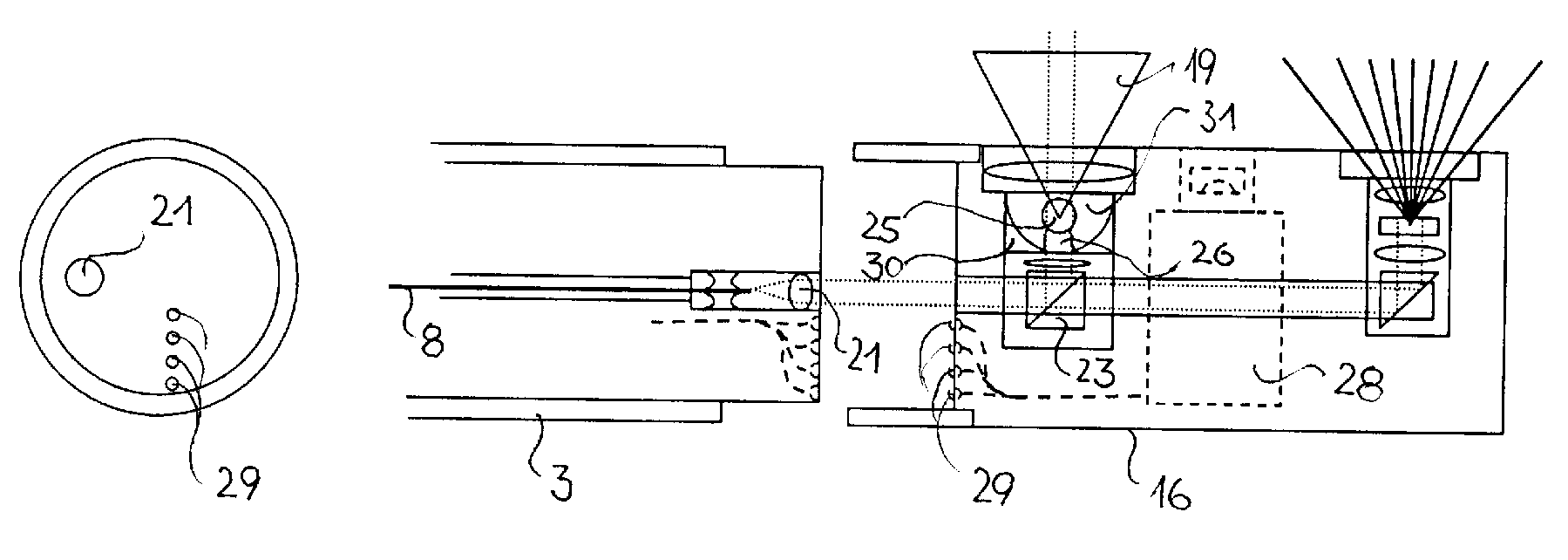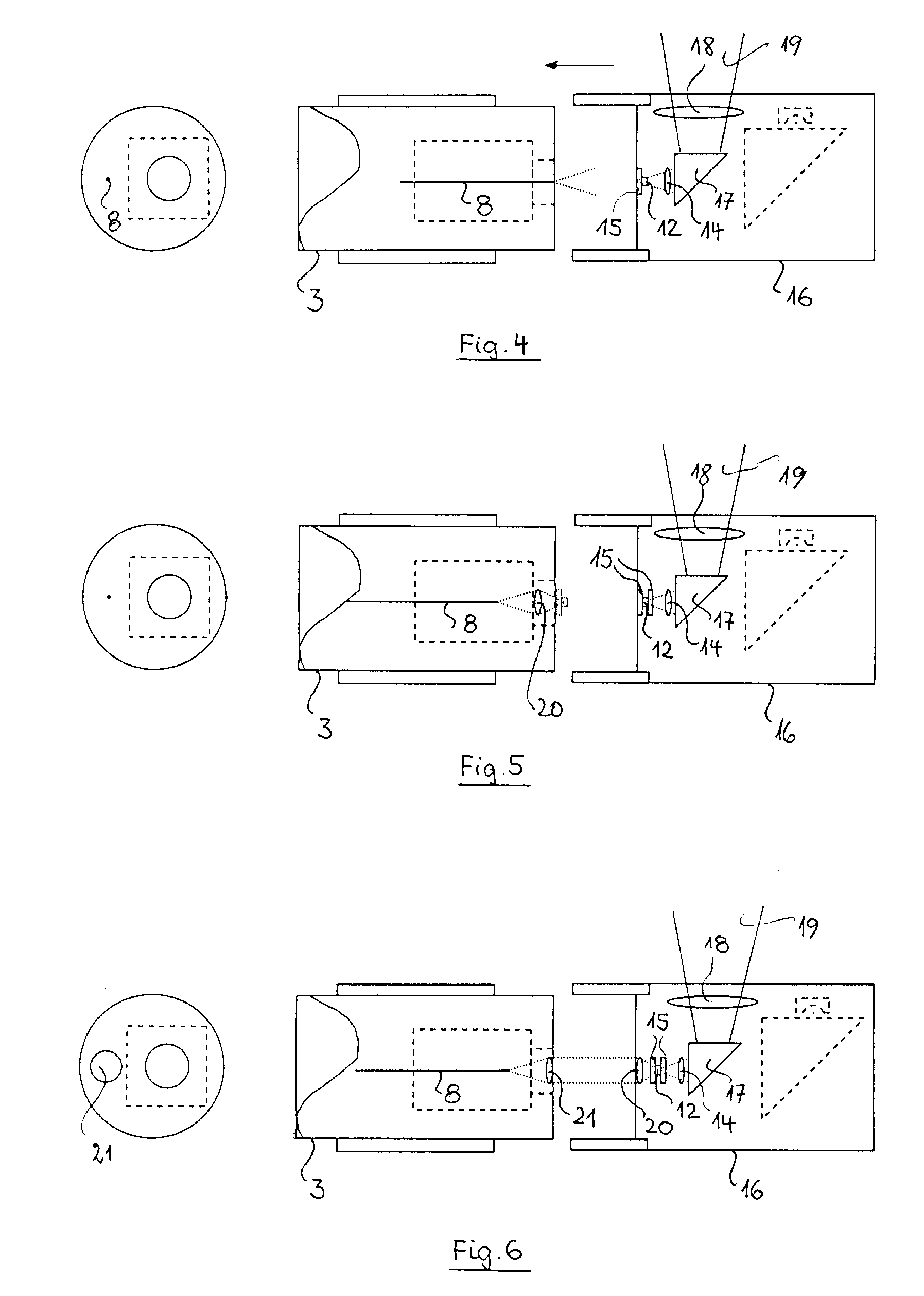Endoscopic System Featuring Fiber-Pumped Fluorescent Illumination
a technology of endoscopic system and fluorescent illumination, which is applied in the field of endoscopic system, can solve the problems of reducing the life of the fluorescence converter, bending of glass fiber, and increasing heat emission affecting the fluorescence converter, so as to facilitate the installation and exchange of system units
- Summary
- Abstract
- Description
- Claims
- Application Information
AI Technical Summary
Benefits of technology
Problems solved by technology
Method used
Image
Examples
Embodiment Construction
[0030]The first illustration, FIG. 1, shows an endoscopic system 1 with eyepiece 2 and an insertion piece 3. The insertion part 3 can be configured as a rigid or a flexible tube. Downstream from, or in place of, the eyepiece with optical transmission of the observed image, a video camera can also be provided with display of the observed image. An excitation beam source 5 is positioned in a supply unit 4 and contains a laser diode 6 and a coupling lens 7 for feeding the excitation light into a glass fiber 8. It is also possible, of course, to provide further laser diodes with the emission of additional wavelengths whose radiation can likewise be fed into the glass fiber 8 or into additional glass fibers. This makes it possible, for instance, to compensate for spectral weaknesses of the white light. The laser diodes can be battery operated or can be supplied with energy by a network part.
[0031]To connect the supply unit 4 with the endoscopic system 1, a light conductor cable 9 is prov...
PUM
 Login to View More
Login to View More Abstract
Description
Claims
Application Information
 Login to View More
Login to View More - R&D
- Intellectual Property
- Life Sciences
- Materials
- Tech Scout
- Unparalleled Data Quality
- Higher Quality Content
- 60% Fewer Hallucinations
Browse by: Latest US Patents, China's latest patents, Technical Efficacy Thesaurus, Application Domain, Technology Topic, Popular Technical Reports.
© 2025 PatSnap. All rights reserved.Legal|Privacy policy|Modern Slavery Act Transparency Statement|Sitemap|About US| Contact US: help@patsnap.com



